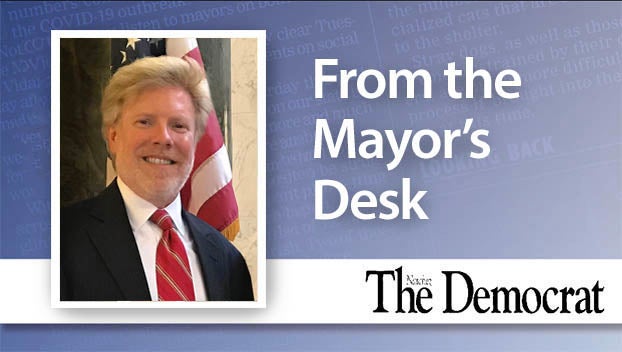Take tour of Foster Mound history
Published 1:27 am Friday, October 21, 2016
The history of the Old Natchez District is alive and well on Foster Mound Road, an ancient and beautiful byway a few miles north of downtown Natchez.
From the oldest Presbyterian Congregation in the Southwest at the west end to the oldest Methodist Congregation at the east end, and with a large Indian ceremonial mound in the middle and several homes listed in the National Register of Historic Places facing the roadway, Foster Mound Road uniquely encompasses three centuries of important American history.
As a part of the 2016 Natchez Antiques Forum, which celebrates the Natchez Tricentennial, a pre-conference motor coach tour will take place from 10:30 a.m. until 2:30 p.m. on Nov. 3.
Called “Indian Chief, King Cotton, and Prince Ibrahima: Royalty on Foster Mound Road,” the tour offers a special opportunity to experience a bit of the three distinct cultures that have intersected near that road.
Eons ago, when there was no road, Native American Indians camped and lived along St. Catherine Creek and traveled the ridges and woodlands. One small Indian mound across a plaza from a large, main mound, now known as Foster Mound, has yielded artifacts dating back as early as 500 B.C.
Foster Mound itself, a major center for one branch of the Natchez Indians, was probably known as the Flour Village in 1400 A.D. Evidence of the Indians’ numerous camp sites can be found as far as a mile or more from the creek.
Then came the white settlers. These were Europeans who first landed on the eastern seaboard and then journeyed westward.
By 1783, an early settler built a log structure on top of what is known as Foster Mound. In 1787 this site was sold to James Foster, one of four brothers who arrived from South Carolina in 1783 with their widowed mother, their sister and their widowed sister-in-law.
They staked out their territory along the St. Catherine Creek in the very area the Indians had previously roamed and hunted. This family brought a new era to the Foster Mound area, first planting tobacco and then planting thousands of acres of cotton.
Land for the crops was acquired through Spanish grants and the purchase of land from neighboring settlers. With the indispensable help of their African slaves, they soon found their place among the leading plantation owners of the day.
In addition to farming, these brothers contributed other cultural changes. On one end of Foster Mound Road, brother William Foster held the first Methodist Conference in his log cabin home in 1812. William and his wife, Rachel Smith Foster, had embraced the Methodist faith after hearing Tobias Gibson preach in 1799. They became two of the first eight members of the new church in Washington and worked to help spread Methodism around the District.
Also living on Foster Mound Road, brother John saw an opportunity to turn his plantation into something more profitable, developing it into the town of Washington and working to have many federal and district offices located there.
Brother Thomas purchased numerous slaves to help develop his plantation. One slave, who rightly insisted he was a son of an African king, was nicknamed “Prince.” With Prince’s intellect, leadership abilities and knowledge of agriculture, Thomas soon became one of the most successful tobacco and cotton producers in the District.
In 1802, when the first Territorial Legislature passed a bill establishing an institution for education for the new territory, months were wasted as various factions argued over where it would be built.
To settle the arguments, the brothers, John and James Foster, and John’s brother-in-law, Randal Gibson, gave the land on which to build the college in Washington, thus helping to establish Jefferson College.
The Antiques Forum tour begins at 10:30 a.m. at the Natchez Convention Center with an overview program by historian James L. Wiggins Jr. of Copiah-Lincoln Community College in Natchez.
After the talk, a motor coach tour led by official guide and Foster family descendant Phebe Winters will travel north. First stop is Foster Mound, home of Rodger Smith.
There you will tour the home and see evidence of the original log cabin, around which the large home was built. You will also hear more of the Foster family’s history, including the fascinating story of “Prince,” to be presented by Natchez Mayor Darryl Grennell.
Next stop is at nearby Glen Mary, a Greek Revival planter’s cottage, built about 1850 by the Fosters and now home of Marion and Carolyn Vance Smith. There you will see art work by Will Smith Jr. and other artists and will be served a picnic lunch featuring food and drink inspired by the three cultures associated with the tour.
Final stop is in Washington at Historic Jefferson College, where exhibits connect the site to the Foster family and where Site Director Robin Person will present remarks about the college.
To learn more about yet another aspect of Natchez’s unique history, join us Nov. 3 for the Natchez Antiques Forum pre-conference tour. Tickets are $100, with a portion of the proceeds benefiting the preservation of National Historic Landmarks Stanton Hall and Longwood.
Conference lectures, meals, historic house tours and more await you at the forum itself. Set for Nov. 4-5, the theme is “Natchez at 300: Toward New Horizons in Decorative Arts.”
For information and tickets, call 601-443-1261, email Janscar@cableone.net or visit natchezantiquesforum.org.
Nan Foster Schuchs is a Foster family descendant.





